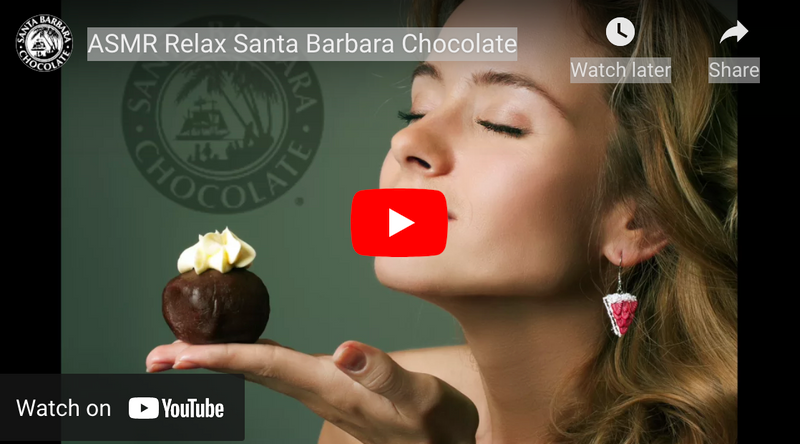ASMR Videos: Tingles and Shivers Through the Magic of Sound
YouTube describes ASMR (Autonomous Sensory Meridian Response) as “the biggest YouTube trend you've never heard of.” If this is the first time you read about ASMR, you will probably be surprised to learn that more people search for ASMR than they do for candy. In fact, YouTube searches for ASMR grew over 200% since 2015—with the most popular video getting more than 16.5 million views—and the popularity of the new phenomenon is only growing as more people are becoming familiar with it through mainstream media and the web.
What Is ASMR
Think back to when you were in elementary school. You are sitting in a class, your mind occupied with everything but the subject of the lesson. Then, your classmate leans over and softly whispers something in your ear so that the teacher won’t hear you. You don’t remember what your classmate said to you, but you distinctly remember a very pleasant tingling, almost sedative sensation spreading from the scalp and moving down the body. If you have such a memory, you know exactly what ASMR is.
It turns out that this warm, relaxing sensation is actually a very common occurrence. Some get acquainted with it during their school years while others experience it whenever they get a haircut, hear the sound of a fountain pen brushing the surface of a paper, or hear a particular word said in a certain manner. These ASMR triggers, as they are known in the community of people who create and consume videos made specifically to elicit these feelings, are numerous.
The term ASMR was coined on 25 February 2010 by Jennifer Allen, who currently works as a manager at Twinstate Technologies and has a background in IT security, networking, and telecommunications. It is often defined as “a combination of positive feelings, relaxation, and a distinct static-like tingling sensation on the skin.” The owner of a very popular ASMR YouTube channel GentleWhispering, Maria, describes ASMR as “showers of sparkles,” saying that the feeling is akin to “warm sand being poured all over you, trickling over your head and down into your shoulders.”
What does the weirdly scientifically term really mean? The word “autonomous” tells us that the pleasant sensation happens without our control. “Sensory” indicates that the experience is initiated through our senses. And, finally, “meridian” is defined in the dictionary as a high point. In other words, ASMR is a climactic experience that happens without our control through our senses.
Some scientists, such as David Huron, Professor in the School of Music at Ohio State University, believe that the response is “strongly related to the perception of non-threat and altruistic attention.” According to his evolutionary theory, the origins of ASMR can be traced back to primates, who “derive enormous pleasure when being groomed by a grooming partner.” The purpose of grooming is not just to get clean but most importantly to strengthen social ties among group members. A primate who is regularly groomed by his mates feels welcomed and relaxed.
This theory is supported by several early scientific studies, like the one from psychiatrist Michael Yasinski, which reports that “ASMR may be similar to meditation in the way it helps individuals focus and relax helping to shut down parts of the brain responsible for stress and anxiety. Another study, this time conducted by two psychologists, Nick Davis and Emma Barratt, from Swansea University, discovered that “ASMR temporarily improves symptoms of depression and chronic pain.”
How Is ASMR Triggered?
The tricky aspect of ASMR is that it doesn’t work for everyone—at least not in the same way. Most people can experience ASMR when they are triggered by specific acoustic stimuli, such as soft whispering or the sound of book pages being turned. For others, the sensation is, instead, triggered by visual stimuli, like watching someone perform a repetitive task. A very small percentage of people are complete non-responders to ASMR.
Those who have discovered ASMR by accident in their childhood already know at least one trigger, but those who haven’t can try a few common ASMR triggers to see which work and which don’t. Located below is a handy trigger chart, which lists popular triggers and provides links to examples on YouTube.
ASMR Trigger Chart
Why People Listen to ASMR Videos?
All ASMR fans listen to ASMR videos for different reasons. The findings from Barratt and Davis’s study state that 69% of people who scored as having moderate to severe depression use ASMR videos to help ease their symptoms. Indeed, ASMR is showing a great promise in this regard, but much more research has to be done first to conclusively prove the effectiveness of ASMR, turning it into an effective tool that psychiatrists can use to help their patients.
Others are listening to ASMR videos to overcome sleep issues and even insomnia. According to Google, searches for ASMR tend to peak around 10:30 p.m., which is when people are usually about to hit the sack. In fact, ASMR sleep is one of the top related terms. ASMR is so effective in this regard that some content creators have started to make videos aimed specifically at children, helping parents from all over the world get more sleep.
But the overwhelming majority of people listens to ASMR videos simply to relax and temporarily forget about real-life stress. This makes ASMR videos similar to a box of yummy chocolate from Santa Barbara Chocolate. Actually, even the taste of our signature organic dark chocolate can be enough to send waves of warm, fuzzy feelings through your body. We have created our own ASMR video for you to listen to while you take delight in the taste of our chocolate. The combination of the soothing sounds of nighttime Santa Barbara with the enchanting taste of chocolate is the perfect way how to unwind and appreciate some of the finer things in life.

